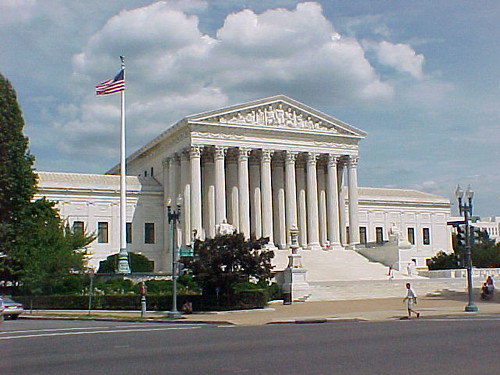Key Takeaways:
- Federal appeals court blocked Trump’s plan to send Guard troops to Chicago.
- Judges across parties criticize Supreme Court arrogance.
- Lower courts resist what they see as fact-finding contempt.
- Delay could cost the administration critical weeks.
- Experts warn this clash weakens high-court credibility.
The Impact of Supreme Court Arrogance
The Supreme Court arrogance claim drove regional judges to object. Lower courts refused to freeze a ruling against troop mobilization. They argued the high court disrespected their careful fact work. Their pushback now stalls the president’s Chicago plan.
In recent days, a federal appeals panel left intact a district court order banning National Guard troops in Illinois. That decision undercut the administration’s effort to flood Chicago with soldiers. Legal experts say lower judges grew weary of the Supreme Court’s tone. They describe a pattern of dismissive and hostile language from the highest bench. As a result, these judges now dig in to defend their own fact-finding.
Background: Trump’s Guard Orders
The president sought a quick deployment of his Guard troops. He aimed to show strength against crime in Chicago. A district judge blocked his plan, finding legal and constitutional issues. The administration asked the Supreme Court to step in. Instead, that court used harsh words to question the lower court’s work. Consequently, appeals judges refused to pause the ban.
Transitioning from request to refusal, the appeals panel sided with the district court. It argued judges must respect local facts and legal reasoning. This move cost the White House time and momentum.
Judges’ Reactions
Slate commentators Dahlia Lithwick and Mark Joseph Stern highlighted this trend. They noted judges across ideological lines speak out. For example, judges appointed by Trump, Obama, and the Federalist Society unite in criticism. They say the Supreme Court arrogance has spurred them to protect their own rulings.
Lithwick said these judges “refuse to be gaslit” by higher authority. She added they call out this conduct as unlawful. Stern agreed, pointing to Trump appointee Amy St. Eve. He noted she wrote orders that protect district court findings. Her decisions show lower courts now check the Supreme Court’s handling of facts.
These judges view high-court language as an “us vs. them” gambit. They see it as an attempt to seize all power. Hence, they push back by emphasizing detailed factual records. They stress that the Supreme Court must defer to real-world findings.
How Supreme Court Arrogance Affects Lower Courts
When the Supreme Court arrogance shows in its rhetoric, judges feel slighted. They believe that the highest court treats their work as optional. They warn this approach undermines the justice system. Therefore, they craft orders that reaffirm their own fact-gathering.
For instance, some rulings now include extra paragraphs on witness statements. Others cite granular economic and safety data. This added detail aims to remind the high court of the ground reality. Judges hope to shield their orders from dismissal.
Moreover, this resistance costs time. Every extra finding can delay final relief. In the troop case, these steps add weeks to the overall timeline. Those extra weeks prevent immediate deployment. As a result, White House plans face growing hurdles.
What This Means for Trump Plans
First, the administration faces legal whack-a-mole. It asks high court intervention but sees swift pushback. Second, the delays frustrate policy goals that rely on speed. Third, the White House may rethink strategies that provoke court fights.
If the Supreme Court had shown more respect, Stern speculates, judges might not resist so strongly. Instead, they would grant smoother relief. Now, the president risks slowdowns whenever he seeks rapid action.
Moreover, this clash over troop deployment is just one example. Future orders on border security or emergency declarations could face similar hold-ups. Every time the Supreme Court arrogance surfaces, it risks creating more legal firewalls.
Lessons for the Justice System
This conflict reveals deeper issues. The Supreme Court sits at the top, yet it needs lower courts to function. District and appeals judges handle daily legal work. They collect evidence, hear witnesses, and shape case law. If they feel ignored or insulted, they may band together.
Such unity dents the high court’s image as an impartial referee. It suggests a breakdown in cooperation. Consequently, parties may face more uncertainty in major cases.
Legal experts warn that disrespect can backfire. When judges team up across ideologies, they form a silent coalition. They can slow down any policy they find questionable. Over time, that resistance may shape limits on presidential power.
Conclusion
Right now, the Supreme Court arrogance debate plays out in Chicago. Yet it may signal a bigger shift. Lower courts, once deferential, now assert their own authority. This movement affects not only troop deployments but any fast-moving policy. In a system built on checks and balances, respect matters. When courts clash, everyone feels the ripple.
Frequently Asked Questions
Why did the appeals court refuse to halt the district order?
The appeals court said lower courts deserve respect for their detailed fact work. It ruled that the high court shouldn’t ignore local findings.
How did judges describe Supreme Court behavior?
They called it dismissive and hostile toward their rulings. Some said it felt like being gaslit by a higher authority.
Could this conflict affect other policies?
Yes. Any presidential action that bypasses careful court review may face similar delays. Judges could form more detailed records.
What can the Supreme Court do to ease tensions?
The high court could acknowledge lower courts’ fact findings and use less confrontational language. That might restore smoother cooperation.

